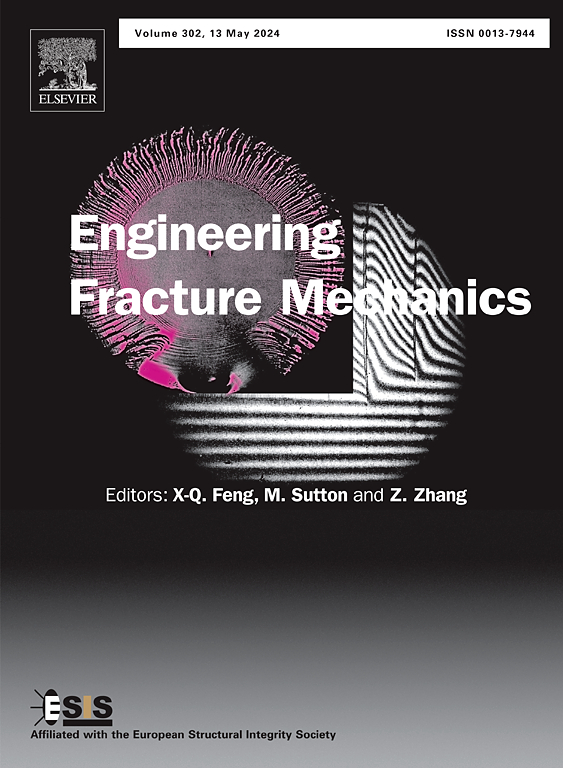Phase field fracture modeling of mechanical degradation and crack propagation in random porous sintered nano-silver with thermal and strain-rate effects
IF 4.7
2区 工程技术
Q1 MECHANICS
引用次数: 0
Abstract
Sintered nano-silver, known for its superior thermal properties, is increasingly vital for dissipating heat in high-power electronic devices. This study explores how temperature (25–200 °C) and strain rates (1 × 10-1–1 × 10-5 s−1) affect the mechanical properties and crack propagation in this material. Experiments and simulations, using shear tests on lap specimens and a phase field fracture model that accounts for energy contributions from temperature and strain rate, reveal significant insights. Below 100 °C, mechanical strength is primarily reduced by temperature softening, with little change in porosity. Above 100 °C, a re-sintering process triggered by thermal energy alters the material’s mesoscopic structure. Despite consistent porosity across tests at various strain rates, an increase in shear strength underlines the material’s sensitivity to strain rate changes. The model further shows that while strain energy remains fairly constant across temperatures, the contribution from thermal energy peaks and then diminishes as temperature rises, inversely affecting shear strength. Conversely, higher strain rates reduce the energy contributions from both strain and rate, decreasing energy-driven fractures and boosting strength. The model successfully predicts crack propagation patterns in tested specimens, validating its effectiveness in assessing the mechanical behavior of sintered nano-silver.
求助全文
约1分钟内获得全文
求助全文
来源期刊
CiteScore
8.70
自引率
13.00%
发文量
606
审稿时长
74 days
期刊介绍:
EFM covers a broad range of topics in fracture mechanics to be of interest and use to both researchers and practitioners. Contributions are welcome which address the fracture behavior of conventional engineering material systems as well as newly emerging material systems. Contributions on developments in the areas of mechanics and materials science strongly related to fracture mechanics are also welcome. Papers on fatigue are welcome if they treat the fatigue process using the methods of fracture mechanics.

 求助内容:
求助内容: 应助结果提醒方式:
应助结果提醒方式:


